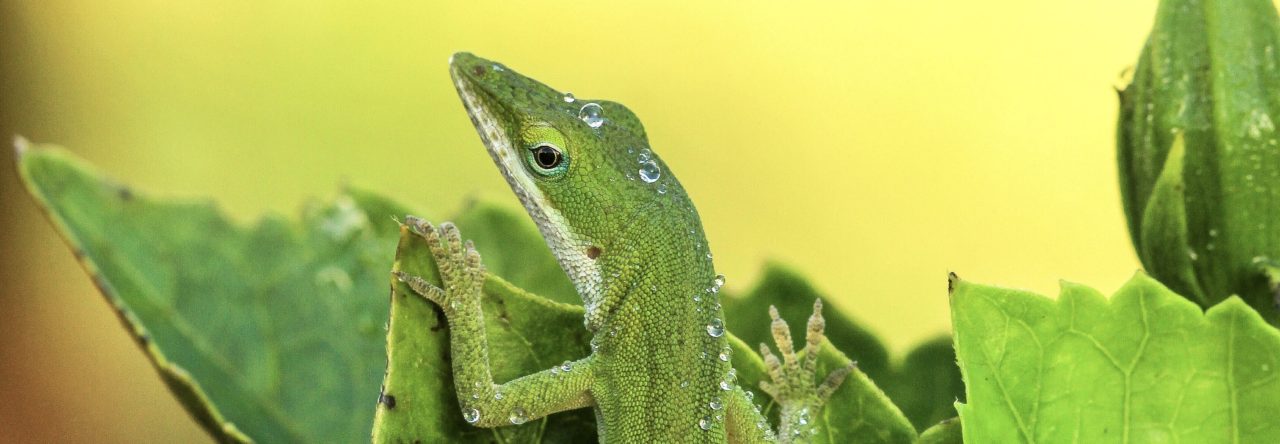
Little blue heron snacks on A. sagrei. Photo copyright bullfrog101, http://www.flickr.com/photos/43104350@N02/4463474718/sizes/l/in/photostream/
In the West Indies and southeastern U.S., the enormous population size of anole species makes them an important component of the ecosystem. In the rainforest of Puerto Rico, for example, the three most common anole species consume an estimated 450,000 insects per hectare. The flip side of this abundance is that anoles—small, not very fast, presumably tasty—may be an important food source for many other species. Indeed, most West Indian snakes eat anoles and, collectively, anoles constitute more than 50% of the diet of West Indian snakes. Similarly, many types of birds will eat anoles at least occasionally (e.g., 40% of the species at one study site in Grenada were observed eating anoles), and some species eat them in large numbers. In addition to birds and snakes, anoles seem to be eaten by just about any flesh-eating animal (or plant) big enough to do so. Other documented predators include many types of lizards (including many instances of cannibalism), dogs, cats, mongooses, frogs, katydids, tarantulas, spiders, whip scorpions, and centipedes (see Lizards in an Evolutionary Tree for citations and further discussion).
Despite the ecosystem importance of anoles, and particularly of predation on them, there is still a lot we don’t know about who eats anoles, when and how. For this reason, field studies are needed, and everyone should be encouraged to document observations they make. For example, a recent post on the “Anolis Lizard” page on Facebook provided a link to a video of a crab eating an unfortunate A. agassizi (itself a remarkable and little known species from Malpelo Island in the Pacific). I am unaware of any previous evidence of crab predation on anoles, and scavenging can be ruled out because the poor lizard is still alive. This situation may be atypical, though, because Malpelo is essentially one big rock, and thus the anoles are always on the ground.
Another example is a recent paper documenting predation by a heron on A. sagrei introduced into Taiwan. In itself, this is not particularly surprising; heron predation on anoles is well-documented in their natural range in the New World. The interesting twist is that A. sagrei is very abundant where it occurs in Taiwan. Hence, this abundance may be altering local ecosystems by providing substantially more food for some predators, in turn possibly increasing predator population size and, consequently, the effect those predators have on other prey species. Indeed, introduced anoles appear to be an important prey item both for brown treesnakes on Guam and Nile monitors in Florida, perhaps allowing populations of those predators to become quite large, with devastating effects on other elements of the food web.
Much yet remains to be learned about the natural history of anoles. Papers and observations such as these are important in filling out our understanding of anole ecology and evolution.
- Evolution in Real Time on Lizard Island - March 23, 2025
- Spider Snags Adult Anolis osa - March 22, 2025
- An Homage to the Green Anoles of New Orleans - March 21, 2025


Jonathan Losos
Norval and colleagues have reported predation on Taiwanese A. sagrei by a second bird species, the brown shrike. The paper is here, and includes gruesome photos of two sagrei skewered on fences.